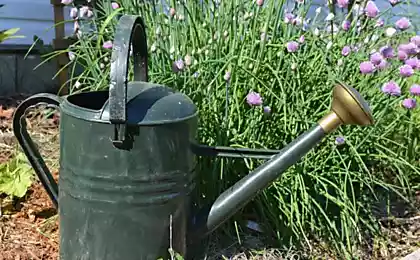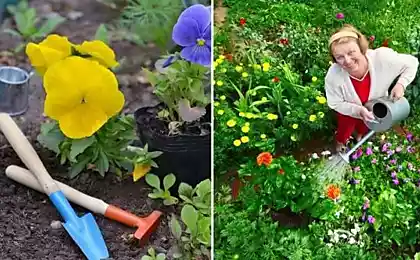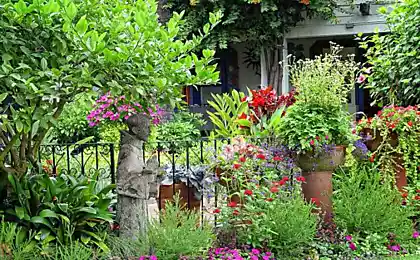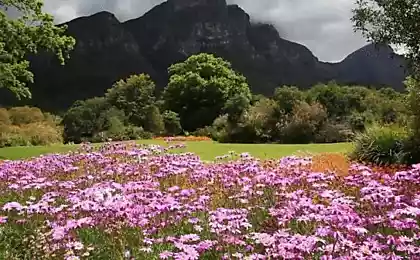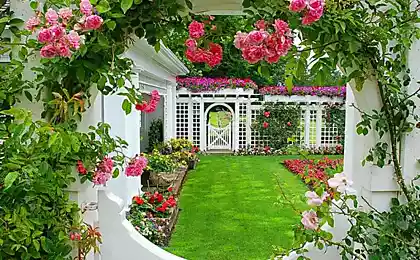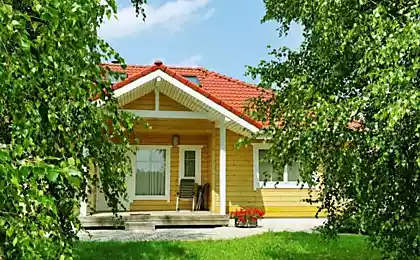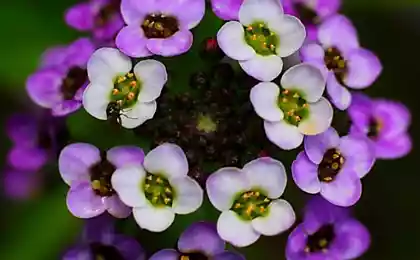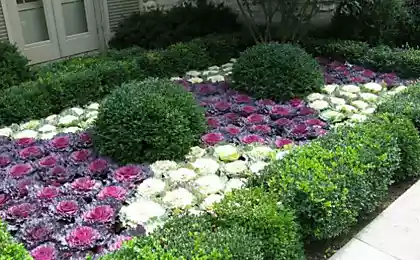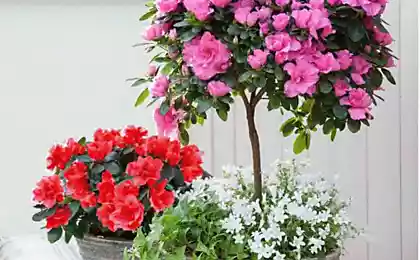142
Why do I bother with capricious flowers when you can plant the whole yard with shrubs?
Growing flowers in the garden For many, it's like meditation. Of course, this is a rather difficult process. After all, it is not enough just to plant seedlings and water them from time to time. Plants need full care, which takes a lot of time and effort. But the result is definitely worth it!
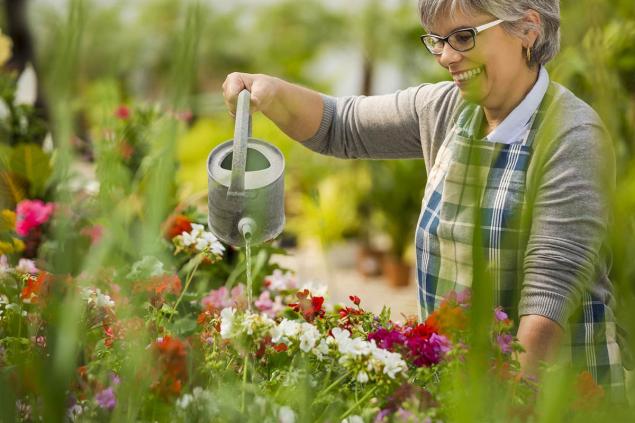
Today's edition. "Site" It will tell about the bright flowers, the beauty of which eclipses all the effort spent. For the sake of such floral splendor, I want to work even more. Just look at these wonderful plants!
Inexperienced gardeners prefer unpretentious plants. They need minimal care and the simplest conditions for maintenance. But will they be able to decorate your garden as well as the beauties from our collection? Let's get to know them soon!
Tulips -- perennial onion plant. However, this does not mean that you can plant them once and not worry about flowers on the flower bed for a couple of years. Tulips need careful care, which depends on their variety.

Moreover, they need to be taken care of both before and after flowering. You can't do without digging up bulbs here.
Of course, there are botanical varieties of tulips that can not be dug for several years. But will they be able to compare with fringed Unseen beauty? Probably not.
Anemone crowned and pelargonium Anemone crowned - a noble flower, perfectly coexisting even in the shade. However, you need to play with the germination of the plant, as it depends on the terrain.
In autumn, the anemone tubers must be dug out. Otherwise, the plant will not survive the winter. Until spring, they should be stored indoors, and then planted again in the ground. In addition, there are nuances with the soil in which the plant grew. It can be reused for planting anemones only after 5-6 years.
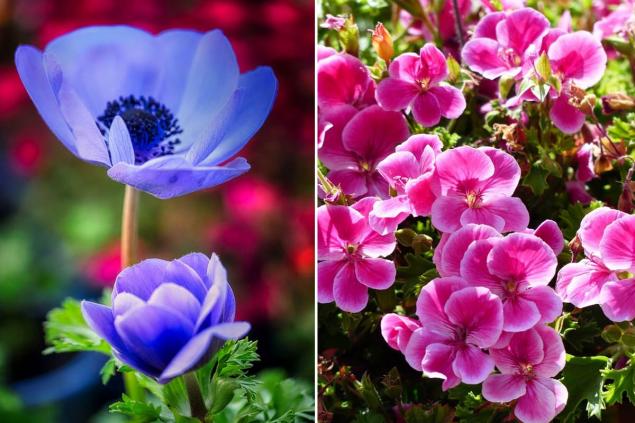
Pelargonia is actually a house flower. But can that stop an avid gardener? The plant successfully fits into the concept of garden beds. However, without proper care here can not do. For example, flowering inflorescences must be immediately eliminated so that the plant does not lose its strength.
In autumn, pelargonium will also have to be dug up, and together with the rhizome. You can leave a couple of cuttings, dry the cuts and root. And in the spring, beautiful flowering bushes will be ready for planting in the ground.
Ranunculus and gladiolus Ranunculus (simple buttercup) It blooms only about 3 weeks a year. However, for this lush and bright flowering will have to sweat a lot. Before planting, the seeds need to germinate.
The plant will thank you if you take care of it like roses. And immediately after flowering, buttercup should be dug and dried tubers. Next, treat with a fungicidal drug, dry again and send for storage.
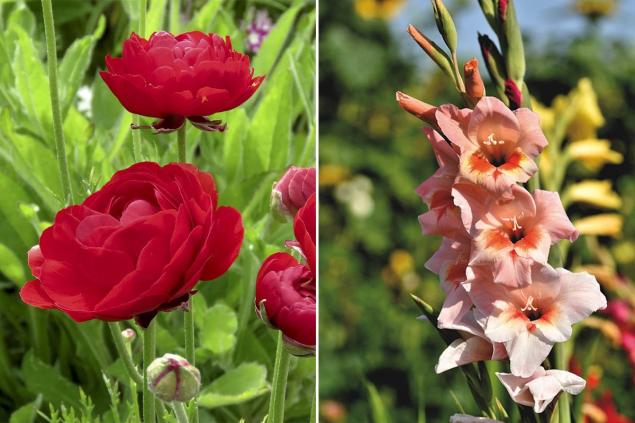
Gladiolus is complicated. A perennial plant needs a windless sunny place and well-drained soil. Moreover, beds need to be cooked in autumn, and before landing, dig them again and apply fertilizers. And that's just a little bit of wisdom. By the way, gladioli bulbs also need to be dug out after flowering. You will find out more about this through the link.
Hyacinth and chrysanthemum multiflora Hyacinths not only look great, but also They smell delicious. Plant bulbs are usually planted in September or October. After flowering, when the leaves turn yellow, the bulbs must be dug out. This happens in late June or early July.
The plant should be planted in a well-lit place. It is important to monitor soil moisture, feed the flower 2-3 times per season. In addition, hyacinth should be protected from garden pests and diseases.
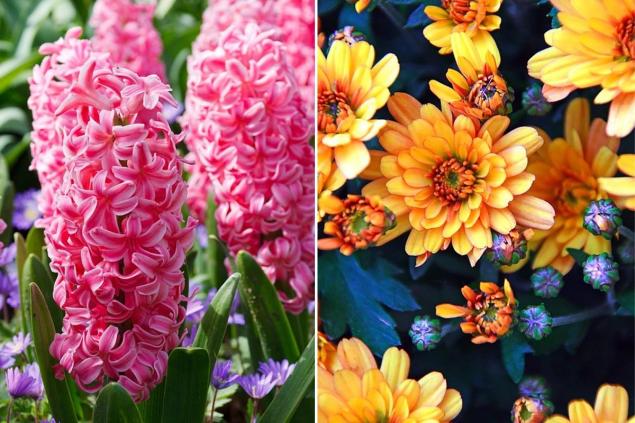
Chrysanthemum multiflora It is full of flowers almost all autumn. There are also late varieties that bloom until the first snow. Of course, such luxury is not easy. The flower should be wintered in suitable conditions. Therefore, chrysanthemum is dug up and, alternatively, transplanted into a pot.
It can be placed on a balcony or on a window sill. After wintering, the plant will dry, but fresh grass will thin out of the soil. It can be cut already for the new summer season. Caring for chrysanthemums largely depends on the variety of plant. This is important to consider.
What a garden without a garden. luxuriant? They say that the less you care for this flower, the less it pleases with its flowering. You really have to take care of it! We share a couple of useful links: pest protection, mulching and feeding, as well as shelter for roses.
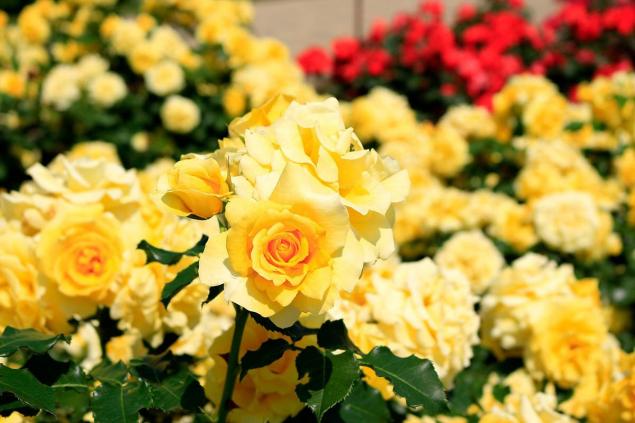
Tell us in the comments what it means. gardening for you? Which of these plants are on your flower beds? Wait for you downstairs!

Today's edition. "Site" It will tell about the bright flowers, the beauty of which eclipses all the effort spent. For the sake of such floral splendor, I want to work even more. Just look at these wonderful plants!
Inexperienced gardeners prefer unpretentious plants. They need minimal care and the simplest conditions for maintenance. But will they be able to decorate your garden as well as the beauties from our collection? Let's get to know them soon!
Tulips -- perennial onion plant. However, this does not mean that you can plant them once and not worry about flowers on the flower bed for a couple of years. Tulips need careful care, which depends on their variety.

Moreover, they need to be taken care of both before and after flowering. You can't do without digging up bulbs here.
Of course, there are botanical varieties of tulips that can not be dug for several years. But will they be able to compare with fringed Unseen beauty? Probably not.
Anemone crowned and pelargonium Anemone crowned - a noble flower, perfectly coexisting even in the shade. However, you need to play with the germination of the plant, as it depends on the terrain.
In autumn, the anemone tubers must be dug out. Otherwise, the plant will not survive the winter. Until spring, they should be stored indoors, and then planted again in the ground. In addition, there are nuances with the soil in which the plant grew. It can be reused for planting anemones only after 5-6 years.

Pelargonia is actually a house flower. But can that stop an avid gardener? The plant successfully fits into the concept of garden beds. However, without proper care here can not do. For example, flowering inflorescences must be immediately eliminated so that the plant does not lose its strength.
In autumn, pelargonium will also have to be dug up, and together with the rhizome. You can leave a couple of cuttings, dry the cuts and root. And in the spring, beautiful flowering bushes will be ready for planting in the ground.
Ranunculus and gladiolus Ranunculus (simple buttercup) It blooms only about 3 weeks a year. However, for this lush and bright flowering will have to sweat a lot. Before planting, the seeds need to germinate.
The plant will thank you if you take care of it like roses. And immediately after flowering, buttercup should be dug and dried tubers. Next, treat with a fungicidal drug, dry again and send for storage.

Gladiolus is complicated. A perennial plant needs a windless sunny place and well-drained soil. Moreover, beds need to be cooked in autumn, and before landing, dig them again and apply fertilizers. And that's just a little bit of wisdom. By the way, gladioli bulbs also need to be dug out after flowering. You will find out more about this through the link.
Hyacinth and chrysanthemum multiflora Hyacinths not only look great, but also They smell delicious. Plant bulbs are usually planted in September or October. After flowering, when the leaves turn yellow, the bulbs must be dug out. This happens in late June or early July.
The plant should be planted in a well-lit place. It is important to monitor soil moisture, feed the flower 2-3 times per season. In addition, hyacinth should be protected from garden pests and diseases.

Chrysanthemum multiflora It is full of flowers almost all autumn. There are also late varieties that bloom until the first snow. Of course, such luxury is not easy. The flower should be wintered in suitable conditions. Therefore, chrysanthemum is dug up and, alternatively, transplanted into a pot.
It can be placed on a balcony or on a window sill. After wintering, the plant will dry, but fresh grass will thin out of the soil. It can be cut already for the new summer season. Caring for chrysanthemums largely depends on the variety of plant. This is important to consider.
What a garden without a garden. luxuriant? They say that the less you care for this flower, the less it pleases with its flowering. You really have to take care of it! We share a couple of useful links: pest protection, mulching and feeding, as well as shelter for roses.

Tell us in the comments what it means. gardening for you? Which of these plants are on your flower beds? Wait for you downstairs!
Wrap my leg just above the ankle with a layer of scotch or paint tape before any outdoor outing
What Makes Divorced Men Over 40 to Watch Young

